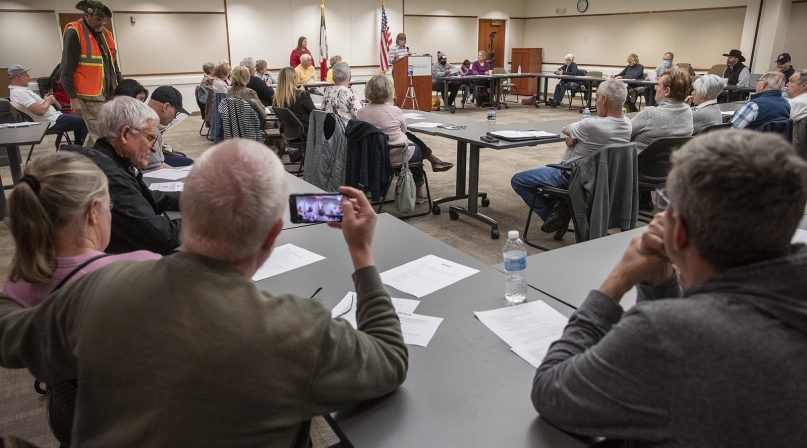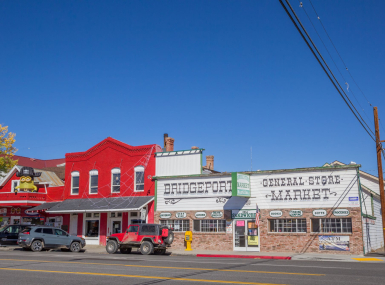Community engagement critical when planning to invest ARPA funds

Key Takeaways
Although board meetings and community events have always allowed residents to connect with local leaders, the American Rescue Plan Act (ARPA) has provided new opportunities for community engagement.
The State and Local Fiscal Recovery Fund enacted under ARPA provides recipients with a wide range of eligible uses. This flexibility includes efforts to respond to the public health and economic impact of the COVID-19 pandemic, provide premium pay to essential workers or investment in water, sewer and broadband infrastructure. As a result, county officials have looked to their residents for guidance on which investments would have the greatest impact on the community.
However, the variety in size, capacity and needs of counties has led to the use of countless different engagement methods.
In many cases, counties created ARPA-specific committees composed of elected officials tasked with crafting ARPA investment frameworks. In doing so, these committees would elicit advice and feedback from residents through public forums at meetings.
Some counties, however, took this concept a bit further. Greene County, Mo. enhanced community engagement by establishing an ARPA Citizen Advisory Committee. This nine-member committee was created to work toward the county’s mission of allocating these funds equitably. Members of this committee include former educators, small business owners and an attorney. By assembling this advisory group with unique experiences, Greene County has incorporated direct resident feedback throughout every step of its ARPA investment process.
Using a slightly different approach, some counties have hosted town hall-style events to engage with community members. Sonoma County, Calif., for example, held district-specific virtual town hall meetings where residents were invited to express the community needs they felt would be best met by investing these funds. The county also hosted several ARPA “meet and greet” networking events to bring together businesses and nonprofit and community organizations that may be sub-allocated ARPA funds. These convenings were intended to encourage collaboration between community partners so that these funds would be most efficiently and equitably invested.
Surveys have proven to be another effective way for county governments to engage with residents during this process. Unlike committee or town hall meetings, surveys provide flexibility to residents who may have scheduling conflicts with meeting times or may not be comfortable providing feedback in a public setting. By providing a more accessible and anonymous format for engagement, some counties have opted to use this method.
Examples of counties that conducted surveys include Talbot County, Md., which published a 10-question survey asking how the county should invest its ARPA funds throughout the community. To ensure the survey was accessible, it was distributed in English and Spanish and was made available for paper and digital submission at the county’s library and other public buildings. With over 600 responses, Talbot County’s survey and similar efforts conducted across the country have helped local officials recognize important areas for investment from a larger sample of its residents.
Regardless of the method, opportunities for community engagement have allowed counties to invest in the most efficient, equitable and meaningful manner. By creating its advisory committee, Greene County was able to obtain valuable insight from community members on how best to navigate small business and nonprofit grant applications.
Likewise, Sonoma County applied feedback from town hall events, specifically concerns regarding negative economic impacts on households and individuals, the need to expand and fortify broadband access and disparities in public health outcomes. directly to its ARPA framework. In doing so, the county invested in additional economic assistance programs for low-income residents, creating a broadband governance organization for broadband development and developing a community engagement strategy to guide county efforts with traditionally underserved and unserved residents.
Through its survey, Talbot County was able to identify the three most important areas of investment to a sample of its community. The County Council was then presented with these findings and provided corresponding suggestions on actions they could take with the remaining ARPA dollars to address these areas of need. This resulted in community-driven ARPA investments in additional funding toward the county’s broadband expansion initiative and equipment for county emergency services providers.
Although most counties have already obligated a substantial portion of their ARPA funds, community engagement is far from finished. County recipients who applied for ARPA allocations months after initially available, recently received its second tranche, are likely now deciding how to invest these funds.
Over the past year, there has also been an expansion in eligible uses for these funds due to changes in the U.S. Treasury Department’s Final Rule and the passage of the State, Local, Tribal, and Territorial Fiscal Recovery, Infrastructure and Disaster Relief Flexibility Act. This flexibility allows counties to use funds toward a wider range of county services, disaster relief efforts and infrastructure projects. As a result, counties will continue to rely on resident engagement as they invest the remainder of funds through the next two years.
Attachments
Related News

Counties attract talent by stressing public service appeal
Whether they’re up in the mountains or surrounded by millions of potential job candidates, counties face challenges recruiting talent to enter the public sector job market.
Interim county administrators bridge the gap and offer seasoned experience
After long careers in administration, some professionals relish a chance to help counties out for short stints when their Boards are in transition.

Pa. counties consider furloughs, loans as state budget lapse continues
For the third time since 2015, an unresolved state budget dispute that has dragged on for several months has left counties without the revenue that they depend on to provide critical services.
